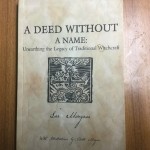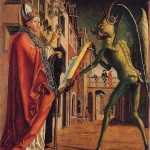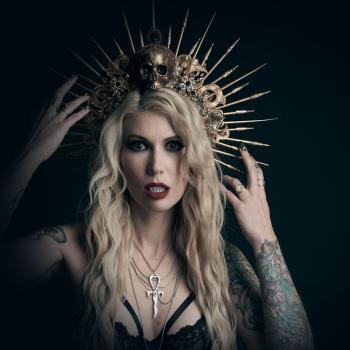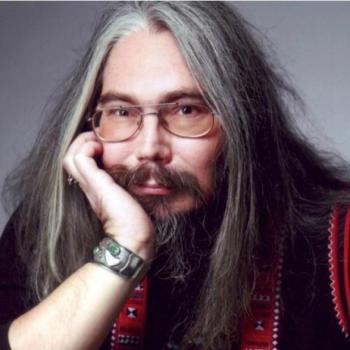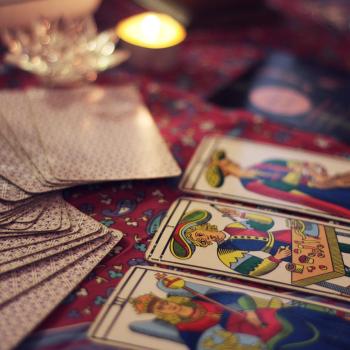Science, Occultism, and Heresy
During the time of the Inquisition, free thinkers of all kinds were put on trial for various forms of heresy. Numerous men and women were tried and put to death for their crimes. By the 16th and 17th centuries the Church’s fear of heresy had reached a peak. Not only were they concerned about heretics within diverse Christian groups, they also had to contend with the growing number of educated free thinkers. Many books and ideas were put on a church-sanctioned forbidden list. Those books that contradicted the approved Church doctrine were banned specifically to prevent these ideas from spreading. If these ideas were allowed to spread to the masses it would damage Christianity’s reputation. Science and medicine were also new areas of study that were on the rise during this time period. New discoveries were being made in different areas, posing new philosophical questions.
Through empirical science concrete evidence supporting alternate views of the Universe would anger Church officials who adhered to the Holy Scriptures as the infallible truth. It was during this period of the Inquisition that a war was going on between science and religion. New evidence proving the heliocentric model of the solar system challenged the infallibility of the Bible, and this infuriated church officials. Their goal was to silence these free thinking scientists in whatever way they could.

Galileo, Copernicus, and the Scientific Revolution
Galileo Galilei and Nicolaus Copernicus are two of the most well-known examples of scientific revolutionaries who were eventually accused of heresy. Both of these men of science supported the heliocentric view of the solar system, which had already been theorized in antiquity. Isaac Newton is another prominent example. Known for his theory of gravity, Newton had other ideas that were condemned by the Church as well. Newton was also an occultist who studied extensively the subject of alchemy. The occult sciences held as much interest for these men of science as the natural sciences, and a study of both would show that they are more connected to one another than one would initially think.
The Scientific Revolution secured science a permanent foothold in Western Civilization, encouraging the practice of skepticism. Seventeenth century philosophers like Descartes, Bacon, Galileo, and Kepler, all refused to rely on existing knowledge, depending on knowledge gained from observation and experimentation. This methodology of skepticism was used to challenged the doctrine of both Judaism and Orthodox Christianity. This new way of interpreting information about the world posed two major threats to traditional Christian belief as perceived by Church officials. The issues caused by the contradiction of the heliocentric model of the solar system raised more questions about the scripture’s literal interpretation. Another challenge was raised by the idea that the Universe was like a machine that operated on a predetermined set of rules. This implies that God was not as active in the physical movements of the celestial bodies, acting as Creator and setting the Universe in motion to continue operating based on its natural laws. The Church was threatened because their infallible nature was called into question. However, many scientists insisted that there was no conflict, and many theologians also agreed. They argued that religion and science have different concerns, and can therefore coexist. According to Galileo scripture was not meant to explain natural phenomenon, but to convey religious truths that human reason could not grasp.

Protestantism and the Age of Reason
As the new sciences become more widely accepted, many theologians, especially Protestants, accommodated scientific knowledge along with religious beliefs. Welcoming these new principles of reason, Protestant officials hoped that this reason would purify Christian religion from superstition, magic and ignorance, which they accused the Catholic Church of Promoting. By 1700 theology has lost its dominant position in University curriculum and religion lost much of its influence on secular matters. However, it remained a vital force in European communities. Although various types of indigenous folk magic were maintained by people, the drew on Christian imagery and symbolism. Folk magic was the practical tool chest of the laity. In elite circles where literacy and education were more prominent; academics also studied classic medieval grimoires, magical alphabets and various rituals of ceremonial magic, combining European folk practices with more complex esoteric concepts.
Today, many modern magical practitioners, especially within modern traditional witchcraft revivals, combine the archetype of the wild hedge witch with the intellectual pursuit of occult studies and ceremonial practices. Thus creating a well-rounded magical practitioner. With the accessibility and many translations of these one rare tomes, new hybrids of academic occultism and witchcraft are on the rise. One of the main defining features of modern traditional witchcraft is the combination of various indigenous European folk practices, and an in-depth study of medieval grimoires, Renaissance occultism, and both Jewish and Christian esotericism. Schools of traditional European witchcraft recognize the influences that Jewish mysticism and Christian imagery play in shaping the witchcraft paradigm.

Science and Magic, Two Old Friends.
Alchemy eventually was transmuted into Chemistry and astrology led to astronomy and sacred geometry can be found in mathematics. Together science and magic can compliment one another. Witchcraft itself is an art and science of the Unseen World, seeking to uncover and understand the inner workings of the Universe. With the rapid advances in scientific theory, quantum physics, and discoveries like the god particle; science often comes very close to sounding like esotericism. In modern witchcraft revivals that draw from the grimoire traditions, using tables of correspondence, astrological associations, and the Hermetic Principles, which act as a kind of Scientific Method. We realize that magic and witchcraft can become very precise and scientific in nature as one delves into deeper occult concepts.
Scientists and magical practitioners walk a similar path in pursuit of knowledge, both seeking answers, illumination, and gnosis. It is in their nature to question that which is “normal” or “mainstream.” This puts them perpetually on the outside looking in. As an outsider, we are able to get a better look at the bigger picture by witnessing those interactions that would otherwise go unnoticed. Society teaches us not to question, but to conform. It is not in the nature of these individuals to take another’s authority as infallible truth, focusing more on individual experience. Individualism is a threat to the authoritarian institutions of orthodox religion. As history tells us, those who were a threat to the institution were condemned of heresy, and either imprisoned or put to death to prevent spreading new ideas.
The American Inquisition
Four hundred years ago in 1616 Pope Paul V made the Papal Decree Against Heliocentrism, which banned the works on this topic until corrected to match the views of the Church. Other similar works were forbidden completely. There existed an entire Index of Forbidden Books that was compiled by the Catholic Church to prevent the spread of damaging ideas.
“This congregation has also learned of the spreading and acceptance by many of the false Pythagorean doctrine, altogether contrary to the Holy Scripture, that the Earth moves and the Sun is motionless, which is also taught by Nicolaus Copernicus.” – Papal Decree Against Heliocentrism
The recent censorship of the scientific community ordered by the Trump administration is eerily similar when we take into consideration the influence the Religious Right has had in recent years, and an attempt by officials to stop potentially damaging ideas from spreading. The oppression of scientific information is a characteristic of an authoritarian power, that wants to keep its public ignorant and be the sole source of information so they may create their own reality. This was a similar tactic used by the Roman Catholic Church to maintain its power and authority during the Inquisition and Reformation.
As Pagans, witches and magical practitioners it is important that we make our voice known, and stand with our brothers and sisters in science. Our presence is important and we must ally ourselves to be on the correct side of history. We claim to worship nature and honor our ancestors, these are the times that count when we must come together and stand with conviction. We are a diverse group of people consisting of many minority backgrounds and members of the LGBTQ community. Although in years past we have been labeled as privileged new age hobbyists, this is definitely not the case. Modern witches like the freethinking men and women of the past stand in opposition to oppression by these institutions that would keep us ignorant.
References:
Are Great Scientists Always Heretics? By Dr, Stuart Clark. www.bbc.co.uk/science/0/22078983
Three Things You Need to Know About the Science Rebellion Against Trump. By: Laura Parker and Craig Welch. news.nationalgeographic.com/2017/01/scientists-march-on-Washington-national-parks-twitter-war-climate-science-donald-trump/#close
The West: Encounters and Transformations Volume 1: To 1715. Levack, Brian. Muir, & Veldman. Pearson Education, Inc.

